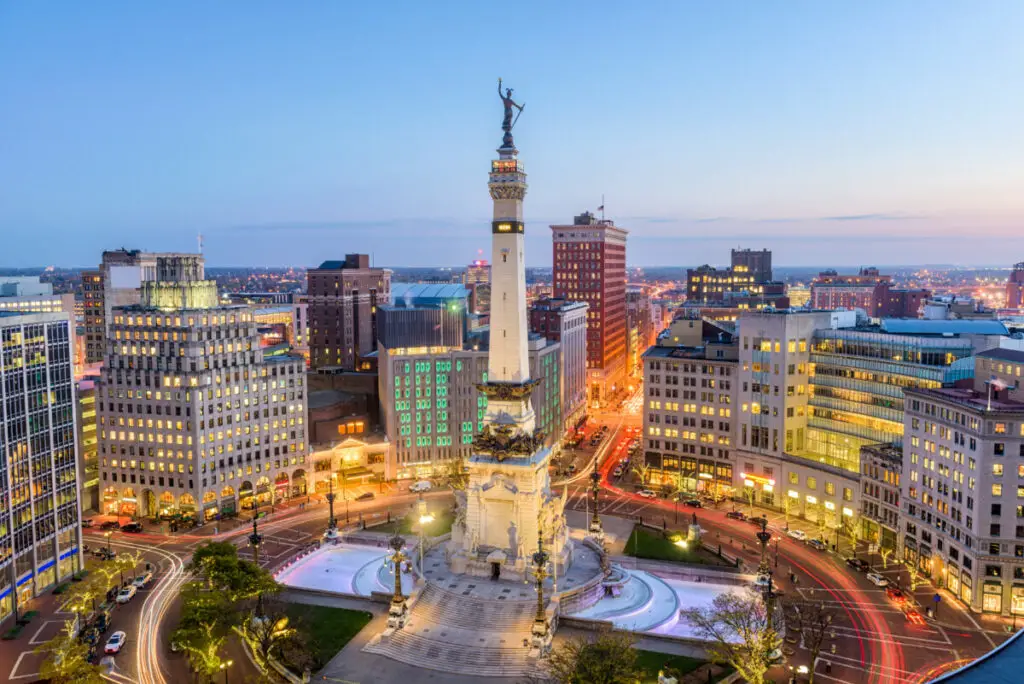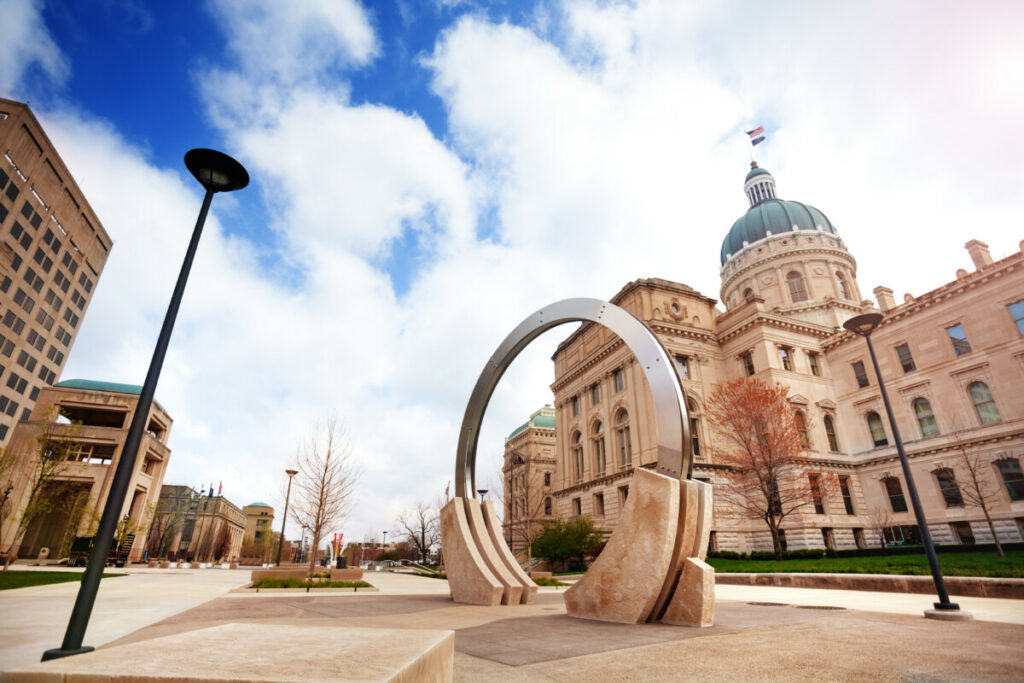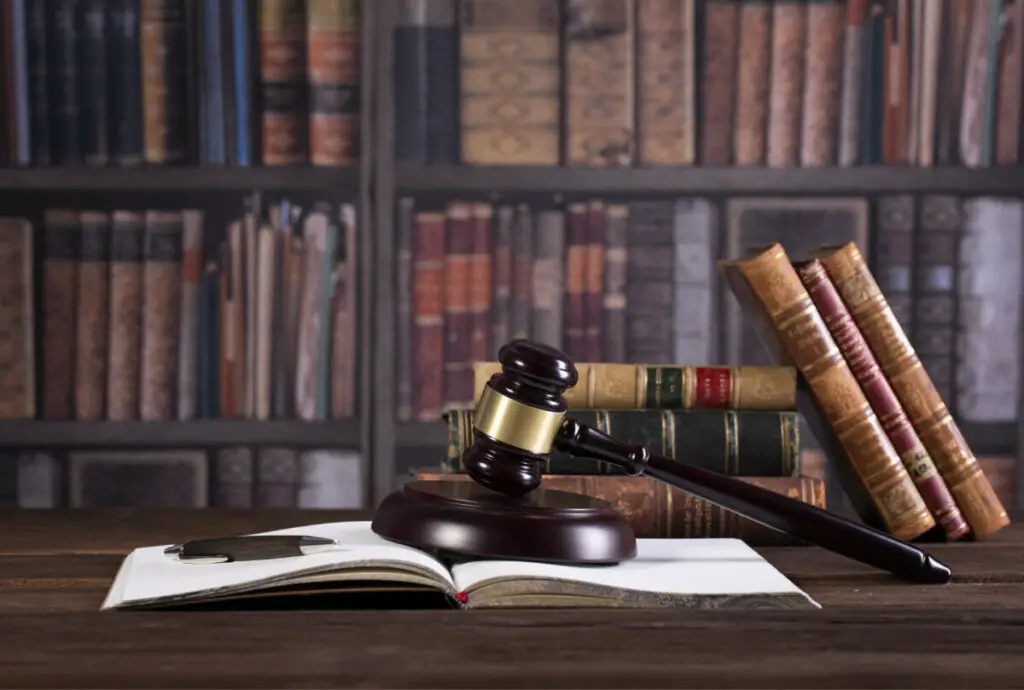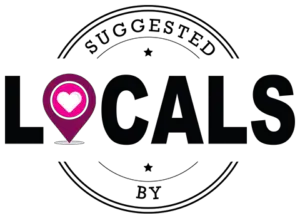
Politics are becoming more and more important in society, and many people want to know whether or not their neighbors have political beliefs that are similar to theirs. Is Indianapolis, Indiana a largely liberal or conservative city?
Indianapolis, IN is a moderately liberal city. The city voted for the Democratic candidate in five of the six presidential elections between 2000 and 2020. Indianapolis’s county, Marion County, is also moderately liberal, and the state of Indiana is moderately conservative.
There are many factors to consider when deciding whether the political climate of Indianapolis is liberal or conservative: the results of presidential elections, the local leaders, the policies in place, and the demographics.
Presidential Elections
The results of a presidential election are a big indicator of whether a city is liberal or conservative. The two major political parties in the United States, the Democratic party and the Republican party, are representative of the liberal and conservative points of view. The Democratic party has mostly liberal members and supports liberal policies. The Republican party has mostly conservative members and supports conservative policies. If most of the residents of a city vote for the Democratic candidate, then the city is most likely liberal. If most of the residents vote for the Republican candidate, then the city is most likely conservative.
The state of Indiana is moderately conservative . The electoral college vote for the state has been for the Republican candidate in all of the elections between 2000 and 2020 except for one in 2008. In fact, the state has voted almost entirely for the Republican party since 1860, though the ideals of the political parties and the meanings of liberal and conservative in the city have evolved over that time. Between 2000 and 2020, the difference between the percentage of Republican votes and Democratic votes was over 10% in every election except for the one in 2008, when the Democratic candidate won by 1.1%.
. The electoral college vote for the state has been for the Republican candidate in all of the elections between 2000 and 2020 except for one in 2008. In fact, the state has voted almost entirely for the Republican party since 1860, though the ideals of the political parties and the meanings of liberal and conservative in the city have evolved over that time. Between 2000 and 2020, the difference between the percentage of Republican votes and Democratic votes was over 10% in every election except for the one in 2008, when the Democratic candidate won by 1.1%.
In the 2020 election, 57.0% of the votes in Indiana were for the Republican candidate, and 41.0% of the votes were for the Democratic candidate. That election had the third highest difference between the Republican and Democratic votes in that 20-year period, after 2004 and 2016.
Marion County, the county in which Indianapolis is, is moderately liberal . Between 2000 and 2020, the Democratic candidate won in that county in all the elections except the 2000 election. The difference between the percentage of Democratic votes and Republican votes was less than 2% in 2000 and 2004, but in the rest of the elections, it was higher than 20%.
. Between 2000 and 2020, the Democratic candidate won in that county in all the elections except the 2000 election. The difference between the percentage of Democratic votes and Republican votes was less than 2% in 2000 and 2004, but in the rest of the elections, it was higher than 20%.
In the 2020 election, 63.35% of the votes were for the Democratic candidate and 34.3% of the votes were for the Republican candidate. At 29.05%, the difference between the percentage of Democratic and Republican votes was higher than any of the differences in the other elections during that 20 year period.
Indianapolis is moderately liberal like its county and unlike its state. The city voted for the Republican candidate in 2000 only, and the difference between the Democratic and Republican candidates was less than 10% in 2000 and 2004. However, the city voted for the Democratic candidate by a difference of 10% or higher every other year between 2000 and 2020. The percentages were similar to those of Marion County.
like its county and unlike its state. The city voted for the Republican candidate in 2000 only, and the difference between the Democratic and Republican candidates was less than 10% in 2000 and 2004. However, the city voted for the Democratic candidate by a difference of 10% or higher every other year between 2000 and 2020. The percentages were similar to those of Marion County.
Between 2018 and 2021, there were 67,336 contributions to the Democratic party in Indianapolis. These contributions totaled $11,150,156. In contrast, there were 17,757 contributions to the Republican party, which totaled $16,058,060. The amount of money contributed to the Republican party was higher though the contribution number was lower; the average donation amount for the Republican party was about 6 times higher than the average donation amount for the Democratic party.
Local Leaders

The local leaders in a city are another factor in the political climate of a city. These are elected individuals that the residents choose to represent, so they tend to be representative of the people’s interests. The political parties of local leaders, the campaign platforms they ran on, and the policies they have enacted are all factors to consider when figuring out whether the city is liberal or conservative.
Mayor
The mayor of a city is an important elected official that is chosen by the whole city. The mayor is in charge of proposing a budget, signing legislation, appointing directors of departments, and overseeing the operation of the city. The mayor also represents the city in larger meeting and gatherings.
The mayor of Indianapolis is Joseph Hogsett . He was elected in 2015 and reelected in 2019. He will serve until 2024.
. He was elected in 2015 and reelected in 2019. He will serve until 2024.
Mayor Hogsett was Indiana’s secretary of state from 1988 to 1994, and he was an attorney for the Southern District of Indiana from 2010 to 2014, so he has been in politics for a while. He has a bachelor’s degree in history and political science, a law degree, a master’s in English, a master’s in theological studies, and a master’s in history. Most of these degrees are from Indiana University, but one is from Butler University and one is from the Christian Theological Seminary.
Mayor Hogsett’s focus during his time in office has been on preventing crime, protecting taxpayers, creating opportunities for working families, and investing Indianapolis’s resources into the city.
Mayor Hogsett is a member of the Democratic party. He was even the chairman of the Indiana Democratic Party from 2003 to 2004. He supports liberal policies
City Council
The Indianapolis City Council is responsible for adopting the city budget, approving mayoral appointees, imposing taxes, and changing or adding city laws, policies, or ordinances.
is responsible for adopting the city budget, approving mayoral appointees, imposing taxes, and changing or adding city laws, policies, or ordinances.
There are 25 city council members in Indianapolis. They are each elected by one of the 25 districts of Indianapolis. The majority of city council members are men. The city council elections are nonpartisan, so members don’t belong to political parties.
Policies

The policies that are in place in an area are another representation of the political climate of that place. There are certain policies that are supported by those with a liberal perspective and some that are supported by those with a conservative perspective. Legal abortion, increased gun control laws, and legal same-sex marriage tend to be supported by liberals and opposed by conservatives.
Abortion
Abortions in Indiana must be performed before 20 weeks after fertilization except in cases of life endangerment or compromised health. They are not covered by private insurance policies, insurance policies for public employees, health plans, or public funding. Before receiving an abortion, a patient must receive an ultrasound and state-directed counseling designed to discourage the patient from getting an abortion. Parents of a minor must consent to an abortion for their child, and abortion clinics must meet strict standards.
in Indiana must be performed before 20 weeks after fertilization except in cases of life endangerment or compromised health. They are not covered by private insurance policies, insurance policies for public employees, health plans, or public funding. Before receiving an abortion, a patient must receive an ultrasound and state-directed counseling designed to discourage the patient from getting an abortion. Parents of a minor must consent to an abortion for their child, and abortion clinics must meet strict standards.
In 2017, there were 9 facilities in Indiana that provide abortions, 6 of which were clinics. This is a decline from 2014. 96% of Indiana counties did not have abortion clinics, leaving 70% of women without access to an abortion clinic.
Gun Control
Indiana had the 17th highest gun death rate in the country in 2020 and the 11th highest crime gun export rate. Indiana gun laws include extreme risk protection orders, open carry regulations, child access prevention laws, and handgun dealer regulations. Indiana does not have universal background checks, gun owner licensing, domestic violence gun laws, assault weapon restrictions, a large capacity magazine ban, waiting periods, or a concealed carry law.
include extreme risk protection orders, open carry regulations, child access prevention laws, and handgun dealer regulations. Indiana does not have universal background checks, gun owner licensing, domestic violence gun laws, assault weapon restrictions, a large capacity magazine ban, waiting periods, or a concealed carry law.
Gay Marriage
Indiana legalized same-sex marriage on October 6, 2014 . This was about nine months before the Supreme Court mandate requiring all states to legalize gay marriage went into effect. It was the 20th state to legalize gay marriage, tied with Oklahoma, Utah, Virginia, and Wisconsin, which all legalized it on the same day.
. This was about nine months before the Supreme Court mandate requiring all states to legalize gay marriage went into effect. It was the 20th state to legalize gay marriage, tied with Oklahoma, Utah, Virginia, and Wisconsin, which all legalized it on the same day.
Demographics
The population of Indianapolis is 877,903 people. The population density is 2,428 people per square mile. 51.7% of the population is female and 48.3% is male. The median age is 33.9 and the average number of people per household is 2.5.
of Indianapolis is 877,903 people. The population density is 2,428 people per square mile. 51.7% of the population is female and 48.3% is male. The median age is 33.9 and the average number of people per household is 2.5.
The racial makeup of Indianapolis is as follows:
of Indianapolis is as follows:
- White: 55.9%
- Black: 27.9%
- Hispanic/Latino: 10.1%
- Asian: 3.0%
- Native American: 0.2%
- Hawaiian/Pacific Islander: 0.0%
- Two or More Races: 2.6%
- Other: 0.3%
42.0% of Indianapolis residents are married and 13.7% are divorced. 26.8% of residents are married with children and 25.6% are single with children.
of Indianapolis residents are married and 13.7% are divorced. 26.8% of residents are married with children and 25.6% are single with children.
The average income of Indianapolis residents is $24,058 per year. The median income is $42,076 per year. The unemployment rate is 5.6%. The sales tax rate is 7.0% and the income tax rate is 4.9%.
of Indianapolis residents is $24,058 per year. The median income is $42,076 per year. The unemployment rate is 5.6%. The sales tax rate is 7.0% and the income tax rate is 4.9%.
85.5% of residents are high school graduates, and 20.7% are only high school graduates. 19.2% of residents have two-year degrees, 29.7% have four-year degrees, 2.1% have master’s degrees, and 1.1% have professional degrees.
of residents are high school graduates, and 20.7% are only high school graduates. 19.2% of residents have two-year degrees, 29.7% have four-year degrees, 2.1% have master’s degrees, and 1.1% have professional degrees.
43.0% of Indianapolis residents are religious. 41.6% of residents are Christian, 0.7% are Jewish, 0.3% are of eastern faith, and 0.3% are affiliated with Islam.
of Indianapolis residents are religious. 41.6% of residents are Christian, 0.7% are Jewish, 0.3% are of eastern faith, and 0.3% are affiliated with Islam.
The rate of violent crime in Indianapolis on a scale of 1 to 100 is 63.4. The rate of property crime on that same scale is 66.9. Both are significantly higher than the average rate in the United States (22.7 for violent crime and 35.4 for property crime).
Related Topics:
If you like the article above, here are some other similar articles you should check out!
17 Reasons Not to Move to Indianapolis, Indiana
